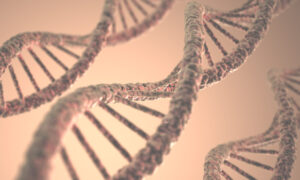Despite great technological advances in reproductive technology, many still find it hard to become parents. Male infertility is a major contributing factor: while the first line of action in treatment often involves the female partner, close to half of infertility cases are due to the male. In this article we’ll see how advances in artificial intelligence (AI) are revolutionizing the diagnosis and treatment of male infertility and further solidifying the importance of testing the male first.
Diagnosing infertility: start with the male
Male infertility contributes to up to 50% of all infertility cases. Sperm evaluation is a critical step in diagnosis and treatment and testing sperm parameters is often straightforward. However, selecting the best sperm is a time-consuming and subjective process – embryologists must select a few sperm from millions in a sample. In some cases, the selection process even damages sperm, making it unusable in fertility treatment. This is where AI comes in.
The power of AI in selecting the best sperm
AI algorithms can overcome the challenges of manual selection, making parenthood a possibility for many. Using AI’s large data processing capabilities and high objectivity, embryologists can identify the best sperm to use for treatment efficiently and without damaging samples.
AI addresses subjectivity (current sperm assessments are highly dependent on the staff carrying out the selection) and efficiency:
- AI’s picture analysis capabilities are unparalleled and can identify patterns that cannot be seen by the human eye
- Machine learning algorithms can process large amounts of data fast and can automate the sperm selection process by combining visual and genetic data.
- Embryo and clinical outcome data, including fertilization, blastocyst formation, and clinical pregnancy rates can be incorporated in the machine learning algorithms to improve applicability and predictive value, thus enhancing success rates.
A systematic review published in the journal Fertility and Sterility in July 2023, looked into current evidence of AI and machine learning applications for sperm selection and investigated their performance in assessing morphology, DNA fragmentation, and motility.
Investigators found that AI algorithms assessing sperm morphology, namely deep neural network and support vector machines, successfully classified sperm of different species, normal sperm and sperm under stress, classified sperm into different morphological categories and predicted embryological and pregnancy outcomes.
Due to their high reliability and efficacy, AI algorithms could also provide the solution for identifying DNA fragmentation. Wang et al. utilized sperm images to train machine learning algorithms and were able to predict sperm DNA fragmentation, providing evidence that sperm morphology and DNA content are correlated.
AI has also been found effective in analyzing sperm motility data quickly and effectively and can assist trained technicians and clinicians with different lab resources, equipment and workflows. AI is also helpful in tracking individual sperm with high fidelity, making it highly useful for procedures like intracytoplasmic sperm injection (ICSI).
Key Takeaway
The treatment of infertility has the potential to be transformed by AI. With increased research, investment in the latest technology, and public awareness, fertility clinics can help many more people become parents.
Harness the power of technology in your clinic and improve success rates for your patients. The SQA-Vision Sperm Quality Analyzer delivers objective and standardized results and reduces human resource dependency in the laboratory. Discover more here.




